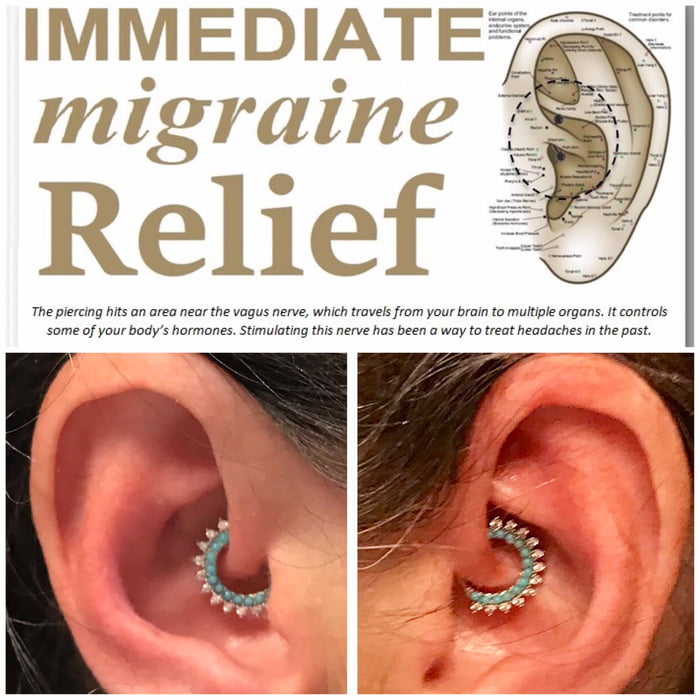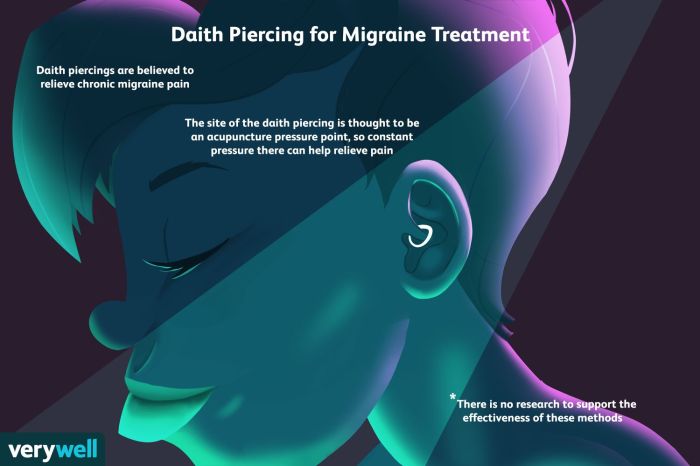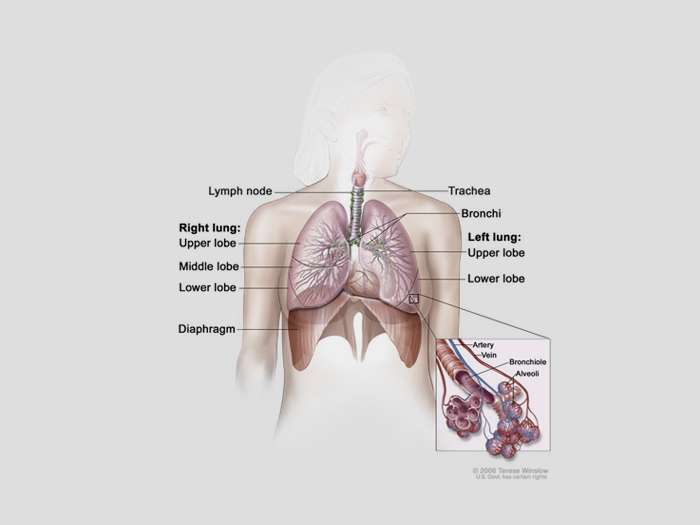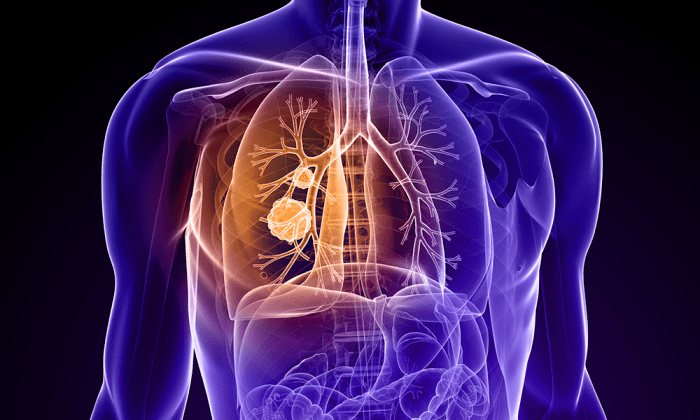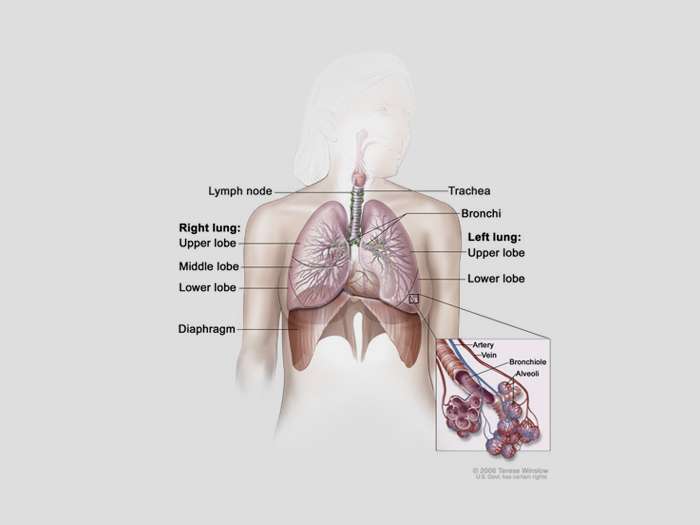How to make a warm compress? This guide dives deep into the world of warm compresses, exploring everything from the basics to advanced techniques. We’ll cover different types, materials, application methods, and even look at variations and alternatives. Whether you’re seeking relief from muscle aches or dealing with a minor injury, understanding how to make and apply a warm compress can be incredibly helpful.
From simple wet cloths to more complex herbal infusions, we’ll break down the process step-by-step. We’ll also discuss important safety precautions to prevent burns and other potential complications. This comprehensive guide will equip you with the knowledge and confidence to effectively use warm compresses for various needs.
Introduction to Warm Compresses

A warm compress is a simple yet effective therapeutic tool. It involves applying a warm, moist or dry cloth or material to a specific area of the body. This method is frequently used to soothe discomfort, reduce pain, and promote healing. Warm compresses can provide comfort for a variety of conditions, from minor aches and pains to more serious medical issues.
The mechanism of action often involves increasing blood flow to the area, relaxing muscles, and reducing inflammation.Warm compresses are a versatile tool with a wide range of applications. They can be used for various ailments, from sprains and strains to menstrual cramps and headaches. The key is to understand the different types of warm compresses and how to use them properly for optimal results.
This will help you decide which type of warm compress is best suited for your specific needs.
Types of Warm Compresses
Warm compresses can be categorized into different types based on the material and method of application. Understanding these differences is crucial for choosing the right type for your needs. Different types of warm compresses offer varying degrees of benefits, and their use should be tailored to the specific condition being treated.
Warm Compress Table
This table Artikels the common types of warm compresses, their characteristics, and their potential benefits.
| Type | Description | Materials | Benefits |
|---|---|---|---|
| Wet Warm Compress | A wet warm compress involves soaking a cloth or towel in warm water and applying it to the affected area. | Soft cloth, towel, warm water | Increased blood flow, reduced muscle tension, relief from minor aches and pains, and potential reduction in inflammation. |
| Dry Warm Compress | A dry warm compress uses a heated pad, a warm, dry towel, or a heating pad. | Electric heating pad, hot water bottle, warm, dry towel | Muscle relaxation, relief from stiffness, pain reduction, and improved circulation. |
| Herbal Warm Compress | This type of compress uses herbs or herbal infusions to create a warm, soothing application. | Herbal infusion, cloth, warm water | Potential for additional therapeutic effects depending on the herbs used, like reducing inflammation, pain relief, and potential calming effect. |
| Moist Heat Packs | These are pre-filled bags filled with a moist or gel-like substance that warms up when exposed to heat. | Pre-filled packs, microwavable | Convenience, ease of use, consistent temperature. Can be used for prolonged periods. |
Materials and Preparation
Warm compresses offer a simple yet effective way to soothe aches, reduce inflammation, and promote relaxation. Choosing the right materials and preparing them correctly is crucial for maximizing their benefits and ensuring safety. Understanding the different types of warm compresses and the appropriate precautions is vital for a positive experience.
Common Materials for Warm Compresses
Selecting the right materials is key to creating a safe and effective warm compress. Common materials include soft cloths, towels, washcloths, and even specialized hot water bottles or reusable warming packs. The material’s ability to retain heat and its softness against the skin are key considerations.
Preparing Different Types of Warm Compresses
Proper preparation ensures the compress is safe and effective. For a simple cloth compress, soak a clean, soft cloth or washcloth in warm (not hot) water. Wring out the excess water to avoid scalding. For hot water bottles, fill them with warm water, ensuring the bottle is properly sealed to prevent leakage. Reusable warming packs typically require following the manufacturer’s instructions for proper heating and use.
Importance of Material Selection and Safety Precautions
The selection of materials for warm compresses is paramount for safety. Avoid materials that could irritate the skin or cause burns. Cotton, linen, or soft fleece are generally good choices. Never use materials that are prone to tearing or shedding fibers. Always ensure the water is comfortably warm, not scalding hot.
Supervision, especially for young children or individuals with reduced sensation, is essential.
A warm compress is a simple, yet effective, way to soothe sore muscles. Just soak a clean cloth in warm water, wring it out, and apply it to the affected area. Choosing the right exercise equipment, like an exercise bike versus a treadmill, can impact muscle recovery, and understanding how to properly recover is key to avoiding further injury.
For example, if you’re torn between an exercise bike and a treadmill for your workout routine, checking out this comparison could help you make the right choice: exercise bike vs treadmill. Once you’ve finished your workout, a warm compress can help to reduce inflammation and promote relaxation, making it a great post-exercise routine addition.
Table of Materials, Descriptions, Uses, and Precautions
| Material | Description | Uses | Precautions |
|---|---|---|---|
| Soft Cloth/Towel | Fabric such as cotton or linen, absorbent, and soft against skin. | General pain relief, muscle relaxation, soothing inflammation. | Ensure water is not too hot; avoid rough or scratchy fabrics; wring out excess water thoroughly. |
| Hot Water Bottle | Insulated bottle filled with warm water; often made of plastic or rubber. | Targeted heat application to specific areas like back or neck. | Ensure bottle is properly sealed to prevent leaks; avoid prolonged use; do not use on broken skin or open wounds. |
| Reusable Warming Pack | Insulated pouch containing a heat-reactive substance; often reusable and requires specific heating. | Targeted heat application for specific areas, potentially longer-lasting heat. | Follow manufacturer’s instructions for heating and use; avoid contact with eyes or broken skin; do not overheat. |
| Washcloth | Small, absorbent cloth; often softer than towels. | Localized heat application to small areas like a strained muscle. | Ensure water is not too hot; wring out excess water; avoid prolonged contact. |
Application Methods
Applying a warm compress correctly is crucial for maximizing its benefits and minimizing any discomfort. Proper positioning, duration, and temperature adjustments are key to a successful and safe application. This section will detail various methods for different body parts, emphasizing the importance of these factors.
Applying Warm Compresses to Different Body Parts
Different body parts require tailored application methods to ensure optimal comfort and effectiveness. Understanding these nuances allows for a more personalized and beneficial experience.
A warm compress is easy to make! Just soak a clean cloth in hot water, wring it out, and gently apply it to the affected area. While you’re resting with your compress, consider incorporating the many benefits of walking every day benefits of walking every day into your routine. It’s a great way to improve circulation and overall well-being, which can help with recovery.
Once the compress cools down, you can simply repeat the process.
- Neck and Shoulders: A rolled-up towel or a specifically designed neck wrap can be used. Ensure the compress is snug but not constricting. Apply the warm compress to the affected area, maintaining a comfortable position. Avoid applying direct heat to sensitive areas or nerves.
- Back: A large, soft compress, like a heated blanket or a dampened, warm towel, can be used. For localized pain, use smaller, shaped compresses, ensuring the compress covers the affected area entirely. Avoid direct contact with the spine. Be mindful of the duration of application and adjust as needed.
- Head: A warm, damp cloth can be applied to the forehead, temples, or the back of the head. Ensure the cloth is not too hot to avoid burns. Gentle pressure is often beneficial, but avoid direct contact with the eyes. Use a thin cloth for better temperature control and avoid excessive pressure.
- Arms and Legs: For these areas, use a heated pad, a warm, damp towel, or a specialized heating pack. Position the compress on the affected area, keeping the compress in place with a bandage or similar support, if necessary. Avoid applying the compress to open wounds or irritated skin.
Importance of Proper Positioning and Duration
Correct positioning and duration are essential for maximizing the benefits of a warm compress while minimizing potential risks.
- Positioning: Proper positioning ensures the compress effectively targets the affected area. It also helps maintain comfort and prevents discomfort or pressure points. The compress should not obstruct blood flow or put undue pressure on sensitive areas.
- Duration: The duration of application should be adjusted based on individual tolerance and the specific condition being treated. Overly long application times can lead to discomfort or skin irritation. Start with shorter durations and gradually increase if tolerated, monitoring for any adverse effects.
Adjusting Compress Temperature
Maintaining the appropriate temperature is vital to avoid discomfort and potential burns. Experimentation and observation are key to finding the optimal temperature for individual needs.
- Monitoring Temperature: Regularly check the temperature of the compress to avoid discomfort. Start with a moderate temperature and adjust as needed. Use a thin cloth or towel to apply warmth to the skin and to avoid direct contact with the heat source.
- Adjusting for Sensitivity: If the individual has sensitive skin, extra care should be taken to adjust the temperature. Start with a lower temperature and gradually increase as tolerated. Consider using a thin layer of cloth between the compress and the skin.
Application Methods Table
This table summarizes the application methods for different body parts, including duration and considerations.
| Body Part | Application Method | Duration | Considerations |
|---|---|---|---|
| Neck and Shoulders | Rolled-up towel, neck wrap | 15-20 minutes | Avoid constricting the neck, monitor for discomfort |
| Back | Heated blanket, warm towel | 20-30 minutes | Avoid direct contact with spine, localized compresses for targeted relief |
| Head | Warm, damp cloth | 10-15 minutes | Avoid hot cloths, avoid contact with eyes |
| Arms and Legs | Heated pad, warm towel | 15-20 minutes | Avoid open wounds, maintain support if needed |
Different Uses and Benefits
Warm compresses, a simple yet effective therapy, offer a range of applications beyond everyday aches and pains. Their ability to increase blood flow and soothe tissues makes them valuable tools in both medical and non-medical settings. Understanding their diverse uses can help you make informed decisions about incorporating them into your self-care routine.Beyond their soothing qualities, warm compresses play a vital role in promoting healing and managing various conditions.
They are a relatively inexpensive and readily available method for easing discomfort and supporting the body’s natural healing processes.
Medical Applications
Warm compresses are frequently used in medical settings to address various ailments. Their ability to increase blood flow can aid in reducing muscle spasms, easing joint stiffness, and promoting tissue repair. The consistent warmth can also provide a comforting sensation that reduces pain perception.
- Muscle Soreness and Sprains: Applying a warm compress to a strained or sore muscle can help relax the tense muscles, reducing pain and promoting blood flow to the affected area. This can accelerate the healing process and alleviate discomfort. A warm compress is particularly helpful in the initial stages of a sprain or strain, as it helps reduce swelling and inflammation.
- Arthritis: The gentle warmth of a compress can alleviate stiffness and pain associated with arthritis. By promoting blood flow to the affected joints, a warm compress can help improve flexibility and range of motion, easing discomfort. However, it is crucial to consult a healthcare professional before using warm compresses for arthritis, as they might not be suitable for all types of arthritis.
- Menstrual Cramps: The soothing warmth of a warm compress can help ease menstrual cramps by relaxing the uterine muscles and promoting blood flow to the area. This can provide significant relief from pain and discomfort.
Non-Medical Applications
Warm compresses also have a range of non-medical uses, providing comfort and relaxation in everyday situations. They can be used to relieve minor headaches, soothe tired eyes, and promote a sense of well-being.
- Headaches: Applying a warm compress to the forehead or temples can help relieve tension headaches by promoting relaxation and reducing muscle tension in the head and neck. The warmth can also help dilate blood vessels, potentially reducing pain. However, for persistent or severe headaches, consult a medical professional.
- Sore Throat: A warm compress can soothe a sore throat by providing a comforting sensation and promoting blood flow to the throat area. The warmth can help reduce inflammation and discomfort. While a warm compress can be a helpful home remedy, it’s essential to maintain proper hydration and rest.
- Relaxation and Stress Relief: The gentle warmth of a compress can be used to promote relaxation and reduce stress. Applying a warm compress to the neck or shoulders can help relieve tension and promote a sense of calmness. This can be particularly beneficial before sleep or in stressful situations.
Comparison to Other Treatments
While warm compresses are a simple and effective treatment option, they may not be suitable for all conditions. Compared to other treatments like ice packs, warm compresses are often better for reducing muscle stiffness and soreness. Ice packs are typically more effective in reducing inflammation and swelling in the initial stages of an injury. However, warm compresses are often preferred for promoting relaxation and easing pain in chronic conditions like arthritis.
Table of Benefits and Applications
| Condition | Application | Benefits |
|---|---|---|
| Muscle Soreness | Apply warm compress to affected area. | Relaxation of muscles, increased blood flow, reduced pain. |
| Arthritis | Apply warm compress to affected joints. | Reduced stiffness, improved flexibility, eased pain. |
| Menstrual Cramps | Apply warm compress to lower abdomen. | Relaxation of uterine muscles, improved blood flow, reduced pain. |
| Headache | Apply warm compress to forehead or temples. | Relaxation, reduced muscle tension, potential reduction of pain. |
Safety Precautions and Considerations
Warm compresses can be a fantastic tool for soothing various aches and pains, but it’s crucial to use them safely. Ignoring potential risks can lead to unpleasant, and sometimes even dangerous, consequences. Understanding the precautions and contraindications will ensure you reap the benefits without compromising your well-being.Applying heat to the body, while often beneficial, can pose risks if not handled carefully.
Knowing the potential pitfalls and how to avoid them is essential for safe and effective use. Consulting a healthcare professional before using warm compresses for specific conditions or concerns is always recommended. Proper precautions are key to making sure that this simple technique remains a safe and effective remedy.
A warm compress is a simple way to soothe aches and pains. Just soak a clean cloth in warm water, wring it out, and gently apply it to the affected area. This can be especially helpful for managing discomfort related to injuries like an MCL tear, a medial collateral ligament injury, which often requires careful treatment and rest.
MCL tear medial collateral ligament injuries can be painful, so using a warm compress can help with pain relief, but remember to always check with a doctor for diagnosis and treatment recommendations. For best results, follow the instructions on your chosen method for making a warm compress.
Potential Risks and Contraindications, How to make a warm compress
Warm compresses, while generally safe, can cause harm if used inappropriately or in situations where they are contraindicated. Certain conditions and situations might make them unsuitable, or even dangerous. Understanding these limitations is crucial for responsible use.
Avoiding Burns and Other Complications
To prevent burns and other complications, always supervise the application of warm compresses, especially on children or individuals with reduced sensation. Never apply a compress directly to broken skin, open wounds, or inflamed areas without professional guidance. Monitoring the temperature and duration of application is vital.
Importance of Professional Consultation
Before using warm compresses for specific conditions, like inflammation, arthritis, or injuries, consulting a healthcare professional is highly recommended. They can assess your individual needs and provide personalized guidance on appropriate techniques and durations. Self-treating with warm compresses for serious conditions could worsen the situation or mask underlying issues.
Safety Precautions Table
| Risk | Description | Prevention | Consultation Guidelines |
|---|---|---|---|
| Burns | Direct contact with excessively hot compresses can cause skin burns, ranging from mild redness to severe blistering. | Use lukewarm or tepid water for the compress. Monitor the temperature frequently. Never apply directly to broken skin. Use a thin cloth or towel between the compress and the skin. Keep the application time short initially and gradually increase it as tolerated. | Consult a doctor if the skin shows signs of burning, redness, or blistering. This is especially important if the area is sensitive or prone to irritation. |
| Skin Irritation | Some individuals may experience skin irritation or allergic reactions from the materials used in the compress. | Use soft, breathable materials like cotton or linen. If using essential oils or other additives, test a small area of skin first. Avoid applying directly to sensitive areas without first consulting a doctor. | Consult a doctor if skin irritation persists or worsens. This is particularly important if the irritation involves itching, swelling, or rash. |
| Exacerbation of Underlying Conditions | Warm compresses might worsen certain medical conditions if used inappropriately. | Consult a healthcare professional before using warm compresses for conditions such as infections, open wounds, or acute inflammation. | Always consult a doctor before applying warm compresses to any condition, especially if you have any underlying medical conditions. |
| Overuse | Applying warm compresses too frequently or for extended periods can lead to skin dryness or other complications. | Limit the frequency and duration of compress applications. Allow adequate time for the skin to recover between applications. | Consult a healthcare professional for personalized recommendations on frequency and duration of application. |
Creating a Step-by-Step Guide
Warm compresses offer a soothing and effective way to address various aches and pains. Understanding the precise steps involved in creating and applying them is key to maximizing their benefits. This section provides a detailed, step-by-step guide for creating different types of warm compresses, from simple to more complex.Creating warm compresses involves more than just heating water. Careful preparation and application are crucial for optimal results.
Following the steps Artikeld below will ensure that your warm compress is safe, effective, and tailored to your specific needs.
Making a Simple Warm Water Compress
Properly preparing a simple warm water compress ensures comfort and therapeutic benefits. This method is suitable for general relaxation, muscle soreness, or minor aches.
- Gather your materials: A clean, soft cloth or towel, a bowl, and warm water are essential. Ensure the cloth is absorbent and large enough to cover the affected area.
- Heat the water: Fill the bowl with warm water. Avoid using water that is too hot, as this can cause burns. Test the water temperature on your wrist before applying it to the affected area.
- Soak the cloth: Dip the cloth into the warm water, ensuring it’s thoroughly saturated but not dripping wet. Wringing out excess water is important.
- Apply the compress: Gently place the warm, damp cloth on the affected area. Cover the area completely.
- Monitor and adjust: Keep an eye on the compress. If it cools down too quickly, reheat the water and soak the cloth again. Remove the compress if it becomes too uncomfortable or too cold.
Making a Warm Compress with a Heating Pad
Using a heating pad for a warm compress offers a more controlled and consistent heat source.
- Select the appropriate heating pad: Choose a heating pad suitable for the area you want to treat. Ensure the pad is large enough to cover the affected area and that it has a safe, regulated temperature control.
- Check the pad’s settings: Familiarize yourself with the heating pad’s instructions and safety features. Some pads may require you to select a specific heat setting. Lower settings are recommended for sensitive areas.
- Apply the pad: Place the heating pad on the affected area. If the pad has a cover, make sure it’s in place. Always monitor the temperature and time of application to prevent burns.
- Adjust as needed: Adjust the heat setting or remove the pad if it becomes too hot. Never leave the pad unattended.
Making a Warm Compress with a Fabric and Hot Water Bottle
This method allows for consistent and controlled heat application.
- Choose a suitable fabric: Select a soft, absorbent cloth or towel.
- Fill the hot water bottle: Fill the hot water bottle with hot (not boiling) water.
- Wrap the fabric: Wrap the fabric tightly around the hot water bottle to create a secure and insulated compress.
- Apply to the area: Carefully apply the fabric-wrapped hot water bottle to the affected area.
- Monitor and adjust: Continue monitoring the heat level and adjust as needed. Remove the compress if it becomes too hot or uncomfortable.
Visual Aids (Illustrations)
Visual aids are crucial for understanding and applying the information about warm compresses. Illustrations can help visualize the different types, materials, and applications, making the process easier to grasp. Clear images of the materials and their proper positioning on the body are essential for safe and effective use. Examples of how warm compresses are used for various body parts are also vital to understanding their versatility.
Types of Warm Compresses
Visual representations of different warm compress types are important to illustrate the variety available. A simple illustration could show a folded washcloth soaked in warm water, a flannel cloth draped over a hot water bottle, and a pre-made, reusable fabric warm compress. These diverse options can cater to different needs and preferences. The illustration should clearly highlight the differences in material, size, and shape.
Warm Compress Materials
The appearance of the materials used for warm compresses significantly impacts their effectiveness and safety. Illustrations should depict the texture and color of different fabrics like cotton, flannel, and linen. For example, a cotton compress might appear as a soft, white or off-white cloth. A flannel compress could be shown as a slightly thicker, plush-textured fabric, often in a variety of colors.
Illustrations should also show reusable fabric wraps and materials, like microfiber or bamboo, demonstrating their different appearances.
Application Methods
Visual aids are critical for demonstrating proper positioning and application of warm compresses. Images should show a person applying a warm compress to the neck, shoulder, or back. The illustrations should emphasize the importance of wrapping the compress gently and securely, avoiding direct contact with the skin to prevent burns. For example, an illustration showing a hot water bottle wrapped in a soft towel to prevent burns would be beneficial.
The image should highlight the correct way to support the compress against the body part, emphasizing the importance of avoiding pressure points.
Different Body Part Applications
Visual aids should demonstrate how warm compresses are applied to various body parts. Illustrations should showcase different ways to apply a warm compress to the neck, shoulders, back, or even hands and feet. For example, a warm compress placed on the back should show the proper positioning to provide relief from muscle pain. Images of a compress wrapped around the ankle for swelling or a compress applied to the forehead for headaches should also be included.
The illustrations should emphasize how to position the compress to target the specific area needing relief. Illustrations for each application should also show the duration of application for best results.
Safety Precautions
Illustrations can effectively convey safety precautions related to warm compresses. Images should highlight the importance of monitoring the temperature of the compress and avoiding prolonged exposure. For instance, an illustration of a person checking the temperature of a compress with their wrist before application is a clear demonstration of the necessity of temperature control. Images should also show the appropriate way to use and store warm compresses to prevent burns or contamination.
Variations and Alternatives
Warm compresses are a versatile tool for soothing various ailments, but sometimes a different approach might be more suitable. Exploring alternatives and variations can lead to better results, depending on the specific need. This section will delve into these possibilities, examining both traditional and modern options.
Herbal Compresses
Herbal compresses offer a natural way to enhance the benefits of a warm compress. Using herbs with known therapeutic properties can provide additional relief and potentially address specific symptoms. For example, chamomile is often used for its calming properties, while ginger may offer relief from inflammation. Care must be taken when selecting herbs for a compress, as some can cause allergic reactions or interact with certain medications.
Always consult a healthcare professional or a qualified herbalist before using herbs in a compress if you have any underlying health conditions or allergies.
Heating Pads and Electric Blankets
Modern alternatives to traditional warm compresses include readily available heating pads and electric blankets. These offer controlled heat and convenience, making them suitable for localized or full-body warmth. Heating pads are generally preferred for localized applications, targeting specific areas of discomfort, while electric blankets offer more generalized warmth.
Comparison of Alternatives
| Alternative | Description | Pros and Cons |
|---|---|---|
| Warm Compress (Cloth) | A simple warm cloth applied to the affected area. | Pros: Affordable, readily available, customizable, easy to prepare. Cons: Can be less effective for larger areas, maintaining warmth can be challenging. |
| Herbal Compress | Warm compress infused with herbs. | Pros: Potentially enhanced therapeutic benefits, natural approach. Cons: Potential for allergic reactions, requires careful selection of herbs, may require more preparation time. |
| Heating Pad | Electric device that generates localized heat. | Pros: Precisely controls heat, effective for localized pain relief, convenient to use. Cons: Can be expensive, may cause burns if not used carefully, requires electricity. |
| Electric Blanket | Electrically heated blanket for full-body warmth. | Pros: Effective for general body warmth, often used for muscle relaxation or to soothe symptoms. Cons: Can be bulky, may not be ideal for localized applications, requires electricity. |
Wrap-Up: How To Make A Warm Compress

In conclusion, using a warm compress can be a valuable tool for managing various conditions, from minor aches to more significant discomfort. This guide provides a comprehensive overview, from the materials needed to the correct application methods. Remember, safety is paramount, and consulting a healthcare professional is crucial before using warm compresses for specific conditions. By following the steps Artikeld, you’ll be well-equipped to create and utilize warm compresses effectively and safely.














